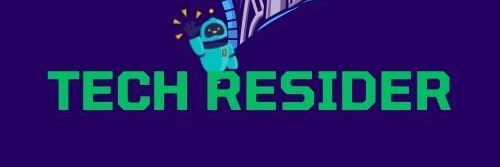Recent popularity of cryptocurrency and digital assets has changed how we deal and manage our finances. With rising use, we need strong security to secure our digital riches from cyber attacks. Blockchain technology, which is decentralised and unchangeable, may solve these security issues. Our blog post will provide blockchain security secrets and practical advice to help you understand and secure your bitcoin and digital assets.
I. Blockchain Security Basics
Blockchain technology basics are essential to understanding blockchain security. Blockchains are distributed ledgers that record transactions across several computers or nodes. This decentralised network is resistant to manipulation and censorship since no one controls it.
Blockchain security relies on cryptography. Secure transactions and digital asset security depend on cryptography. For data encryption, identity verification, and data integrity, cryptographic techniques and protocols are used. The combination of cryptography and blockchain technology provides strong security.
Digital asset protection also requires private key security. Private keys are cryptographic codes that unlock blockchain-stored digital assets. Preventing cryptocurrency theft requires safeguarding these private keys.
II. Crypto Transaction Security
Crypto transactions must be secure to prevent theft or unauthorised transfers. Best practises can greatly improve transaction security.
Secure transactions begin with trusted wallets and exchanges. Select secure wallets and exchangers with good customer reviews. Before giving a wallet or trade your digital assets, check their validity.
Review all transaction details before completing. Check the recipient’s address and transfer amount to avoid errors and fraud. Verifying the information prevents phishing attacks and sending money to the wrong address.
Crypto transaction security also requires encryption. Encrypting transactions protects transferred data. Encrypting transactions keeps data illegible if intercepted.
III. Blockchain Vulnerability Protection
While blockchain technology is secure, it has flaws. Safeguarding your digital assets requires understanding these risks and implementing mitigation techniques.
Securing Smart Contracts
The blockchain stores self-executing smart contracts with predefined rules and circumstances. They are subject to security breaches if not properly secured. Smart contracts are vulnerable to coding flaws, reentrancy attacks, and unchecked external calls.
Smart contract security audits are necessary to mitigate these risks. Use skilled auditors or automated technologies to check the contract’s code for weaknesses. Smart contracts are audited before deployment to ensure proper operation and minimise exploitation risk.
DApp Security
Decentralised apps (DApps) are prevalent across industries. However, greater usage requires strong security. Security threats for DApps include unauthorised access, malicious code injection, and data leakage.
Secure development best practises can improve DApp security. These include user authentication, input validation, and vulnerability updates and patches. DApps built with standardised and validated smart contracts reduce security risks and provide secure functionality.
Blockchain Vulnerability Analysis
To find and fix security holes in blockchain networks, vulnerability analysis is essential. Blockchain vulnerabilities can be assessed using several methods.
Penetration testing, or ethical hacking, simulates real-world attacks to find blockchain network weaknesses. Additionally, vulnerability scanning technologies can automatically scan the network for known vulnerabilities and offer mitigation.
Vulnerability study suggests that patching vulnerabilities, updating software, and applying security measures can increase blockchain defences.
IV. Enhancing Blockchain Defences
Consensus Algorithms: PoW vs. PoS
Blockchain network security depends on consensus methods. PoW and PoS are the most popular algorithms. Each algorithm has security pros and cons.
Since mining additional blocks requires processing resources, PoW is secure. It requires energy and is vulnerable to 51% attacks. To validate transactions, PoS participants must own a stake in cryptocurrency. While more energy-efficient, PoS algorithms may be attacked by huge stakeholders.
Community participation is essential for blockchain network security. Users assist secure networks and prevent malicious activity by participating in consensus processes.
Blockchain Data Integrity and Immutability
Blockchain technology ensures record integrity and security through immutability. The blockchain makes it practically difficult to change a transaction.
Data privacy on a visible blockchain is difficult. While transaction details are public, critical data must be protected. Blockchain and privacy-enhancing technologies like zero-knowledge proofs, ring signatures, and sidechains can balance openness and privacy.
Blockchain Transaction Verification and Audit Trails
Blockchain audit trails promote transparency and accountability. They let users trace transactions and check records. Many methods exist for confirming public and private blockchain transactions.
Anyone may verify transactions on public blockchains by checking transaction history and confirmations. However, private blockchains may require permissioned access for transaction verification to ensure only authorised participants may check and verify transactions.
New transaction verification methods like zero-knowledge proofs allow transaction details to be verified without revealing the data. These privacy-preserving methods improve security, secrecy, transparency, and auditability.
Blockchain security is crucial for cryptocurrencies and digital asset protection. You may improve blockchain security by understanding blockchain technology, securing crypto transactions, defending against vulnerabilities, and strengthening defences.
For security, use reputable wallets and exchangers, verify transaction information, and encrypt transactions. Perform smart contract security assessments and DApp development best practises. Blockchain network vulnerability investigation and patching are advised.
You may secure blockchain networks by engaging in consensus processes and adopting privacy-enhancing technologies. Blockchain security is crucial for cryptocurrency, digital assets, and transaction safety. To keep ahead of risks, follow blockchain security developments.
Discover more from TechResider Submit AI Tool
Subscribe to get the latest posts sent to your email.





